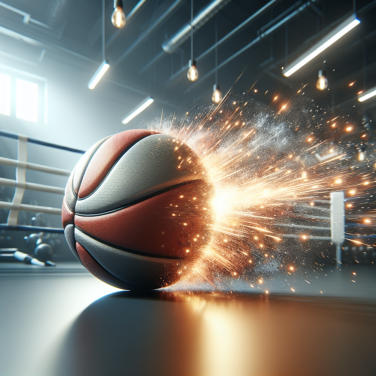The Integral Role of Diagnosis and Treatment in Sports Medicine
In sports medicine, one of the essential stages is diagnosis, often determining the subsequent treatment method. Without a proper diagnosis, it's nearly impossible to implement the appropriate treatment strategy. Therefore, professionals in the field carry an immense responsibility of precisely identifying the conditions from which athletes are suffering to choose the right treatment modality.
Diagnosis in Sports Medicine
The first step to every effective treatment commences with an accurate diagnosis. For sports medicine practitioners, an athlete’s medical history, physical examination, and various diagnostic tests are utilized to identify the exact source of discomfort or reduced performance. Whether it's a minor injury or a chronic condition, obtaining an accurate diagnosis is crucial to determining the best course of action.
Diagnosis largely involves observational evaluations, where the physician evaluates the athlete's physical condition, gait, and posture. It also includes a thorough physical examination, where different body systems are carefully assessed to help pinpoint any underlying issues that could be affecting performance. In some instances, additional diagnostic tests such as X-rays, MRIs, or CT scans might be needed, for a more detailed look at the body's internal structures.
The aim is to separate symptoms from the actual cause, facilitating a deeper understanding of the condition. This dynamic approach to diagnosis caters well to the ever-evolving needs of athletes and ensures a high level of customizability in treatment plans.
Treatment in Sports Medicine
Once a diagnosis has been made, the practitioner can then proceed to develop an effective treatment plan tailored to the athlete's unique situation. Treatment in sports medicine uses a spectrum of methodologies, each designed to address different types of problems. These techniques aim to restore athletes to their peak physical condition and minimize time spent away from their sport.
Non-surgical treatments form a large part of sports medicine. These can encompass prescription medications, physical therapy, therapeutic exercises, corticosteroid injections, or even lifestyle and nutritional advice. In other cases, when injuries are severe, surgical interventions might be the only appropriate choice. Surgery can help repair damaged structures and, in some cases, may prove to be the quickest route to recovery.
The modality and intensity of treatment will largely depend on the diagnosed condition. For example, an athlete with a sprained ankle may benefit from rest, ice, compression, and elevation, accompanied by rehabilitation exercises. Conversely, an athlete with a torn anterior cruciate ligament (ACL) might require surgical reconstruction and extensive post-surgery rehabilitation.
Read also:
Mastering the Game: Essential Strategies for Paddle Tennis
Essential Measures for Injury Prevention in Sports Medicine
Prevention is always better than cure, and in sports medicine, preventive measures are invaluable for protecting athletes. While there’s no absolute safeguard against injuries, there are several necessary steps that medical professionals take to significantly reduce the likelihood of an injury.
Firstly, regular cardiovascular health checks are an indispensable preventive measure. Athletes put immense strain on their hearts during intense physical activity, making them more susceptible to cardiac issues. Health professionals can conduct regular tests such as blood pressure monitoring, cholesterol level checks, and electrocardiograms (ECG) to identify any potential risks. Cardiovascular health checks not only prevent injuries but also ensure the overall well-being of an athlete.
The old adage 'warm-up before exercising' warrants repetition. A proper warm-up routine increases muscle temperature, reduces muscle stiffness, prepares the body for strenuous activity, and helps prevent injuries. Athletes should engage in dynamic warm-ups, typically including stretching, jumping jacks, and jogging in place. In addition to warm-ups, cool-down exercises post-activity are equally crucial to help the body gradually return to its resting state, reducing the likelihood of muscle stiffness and injury.
Thirdly, correct technique is paramount in athletic performance and injury prevention. Incorrect technique or form can progressively overload and strain muscles, ligaments, or joints, leading to injuries. Sports medicine professionals should actively instruct athletes on proper techniques and forms, use video analysis to monitor and correct imperfections, and conduct regular technique training sessions.
Maintaining proper nutrition and hydration levels is another vital preventive measure. Proper diet directly affects an athlete's energy levels, performance, muscle recovery, and resilience to injuries. A balanced diet rich in protein, carbohydrates, and essential vitamins and minerals should be followed. In terms of hydration, athletes must drink enough water before, during, and after activities to replenish fluid loss and avoid dehydration, which can lead to muscle cramp, heatstroke, and other complications.
Personal protective equipment (PPE) plays an instrumental role in injury prevention. Depending on the sport, this could include helmets, mouth guards, knee and elbow pads, and more. Sports medicine professionals should ensure that athletes use suitable equipment and wear it correctly. Regular inspections should be made to ensure all equipment is in good condition and fits appropriately.
Endurance and strength training are also key factors in injury prevention. By improving the body's durability and overall strength, athletes can endure the physical demands of their sports effectively and safely.




